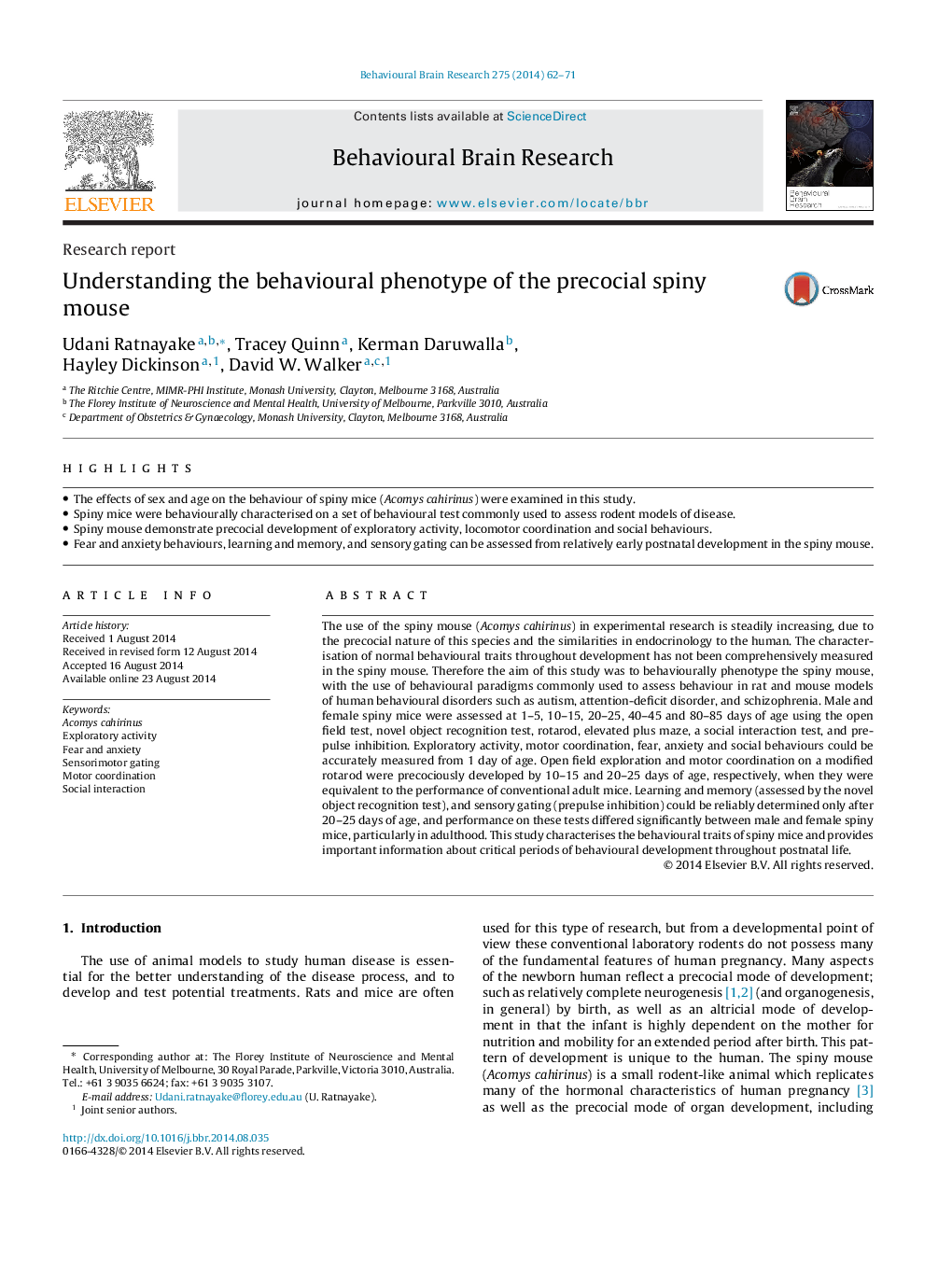| Article ID | Journal | Published Year | Pages | File Type |
|---|---|---|---|---|
| 6257822 | Behavioural Brain Research | 2014 | 10 Pages |
â¢The effects of sex and age on the behaviour of spiny mice (Acomys cahirinus) were examined in this study.â¢Spiny mice were behaviourally characterised on a set of behavioural test commonly used to assess rodent models of disease.â¢Spiny mouse demonstrate precocial development of exploratory activity, locomotor coordination and social behaviours.â¢Fear and anxiety behaviours, learning and memory, and sensory gating can be assessed from relatively early postnatal development in the spiny mouse.
The use of the spiny mouse (Acomys cahirinus) in experimental research is steadily increasing, due to the precocial nature of this species and the similarities in endocrinology to the human. The characterisation of normal behavioural traits throughout development has not been comprehensively measured in the spiny mouse. Therefore the aim of this study was to behaviourally phenotype the spiny mouse, with the use of behavioural paradigms commonly used to assess behaviour in rat and mouse models of human behavioural disorders such as autism, attention-deficit disorder, and schizophrenia. Male and female spiny mice were assessed at 1-5, 10-15, 20-25, 40-45 and 80-85 days of age using the open field test, novel object recognition test, rotarod, elevated plus maze, a social interaction test, and prepulse inhibition. Exploratory activity, motor coordination, fear, anxiety and social behaviours could be accurately measured from 1 day of age. Open field exploration and motor coordination on a modified rotarod were precociously developed by 10-15 and 20-25 days of age, respectively, when they were equivalent to the performance of conventional adult mice. Learning and memory (assessed by the novel object recognition test), and sensory gating (prepulse inhibition) could be reliably determined only after 20-25 days of age, and performance on these tests differed significantly between male and female spiny mice, particularly in adulthood. This study characterises the behavioural traits of spiny mice and provides important information about critical periods of behavioural development throughout postnatal life.
